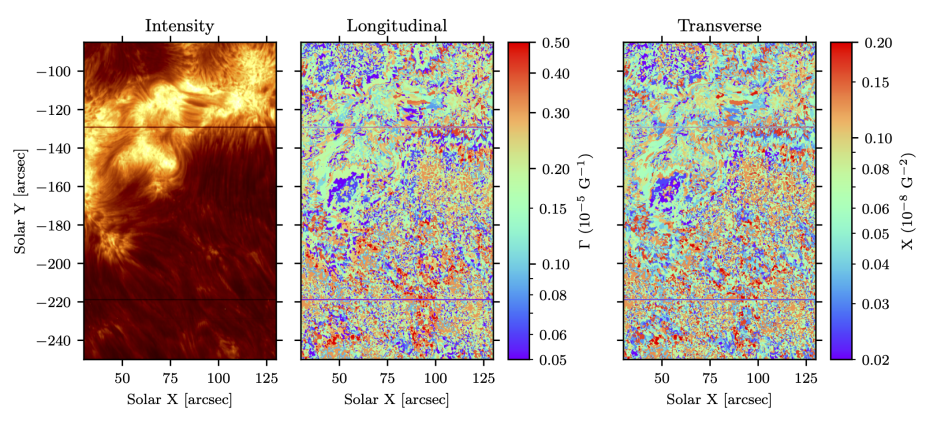Judge et al. (2021) recently argued that a region of the solar spectrum in the near-UV between about 250 and 290 nm is optimal for studying magnetism in the solar chromosphere due to an abundance of Mg II, Fe II, and Fe I lines that sample various heights in the solar atmosphere. In this paper we derive requirements for spectropolarimetric instruments to observe these lines. We derive a relationship between the desired sensitivity to magnetic field and the signal-to-noise of the measurement from the weak-field approximation of the Zeeman effect. We find that many lines will exhibit observable polarization signals for both longitudinal and transverse magnetic field with reasonable amplitudes.

IRIS map used to calculate the longitudinal and transverse sensitivity factors for Mg II and Mn I lines. Left panel: intensity in the core of the Mg II k line. Center panel: longitudinal field sensitivity factor Γ. Right panel: transverse field sensitivity factor X.